A few months ago my yoga studio did this friendly competition to challenge all of us to do more yoga classes. I’m not a competitive person by nature but I do love participating in any group activity so I signed up. The experience was so much fun! We each joined a group and there were 100 participants total. We supported one another and spent a month trying to do as many yoga classes as possible. Guess what the experience taught me? I learned how to build habits that stick! Throughout the process, I discovered 13 little-known tips that psychologically trick us into habit formation.
How to build habits that stick
Are you tired of struggling to make new habits stick?
Do you find yourself constantly falling back into old routines, despite your best intentions?
Don’t worry, you’re not alone.
As a licensed mental health provider, part of my job is to help evaluate my client’s strengths as well as help empower them to find ways to create lasting transformation in their life.
Change is hard, right?
But if you’re determined to learn how to build habits that stick, then you’re ready to take action and find strategies that work.
Let’s unlock the secrets of habit formation and discover the hidden gems that can truly transform your life.
13 secret tips to revolutionize your ability to stick to new habits
In this article, we will explore 13 little-known tips that will revolutionize your ability to stick to new habits.
From starting with small changes to staying consistent, these strategies will empower you to create lasting transformations in your life.
1. Start with small changes
One effective way to make new habits stick is to start with small changes.
For example, instead of telling yourself that you’re going to run 5 miles a day and get in shape, you set a goal to go on a daily walk for 30 minutes.
By focusing on small, manageable adjustments to your routine, you can gradually build up to bigger changes over time.
I have disliked running since I was on the track and field team in high school. So if you’re like me, then create a realistic goal that you’ll stick to rather than trying something that you already know you’ll dislike.

This approach allows you to ease into the habit formation process, making it less overwhelming and more likely that you’ll stick with it.
Another benefit of starting with a small change is that you get a sense of accomplishment early on but also builds momentum and confidence along the way.
It’s much easier to commit to a five-minute daily exercise routine than it is to jump straight into an hour-long workout.
By starting small, you set yourself up for success and create a foundation that you can build upon.
My new habit and goal
My goal for this year is to wake up early. I am NOT a morning person by nature so I’ve started with an incremental change of waking up 15 minutes earlier.
Do you know what the benefit of waking up early has been?
Since it’s only 15 minutes, my mind has not been resistant to the change because it’s something doable.
When you try to overhaul your entire routine all at once, it can be met with resistance and pushback from your subconscious.
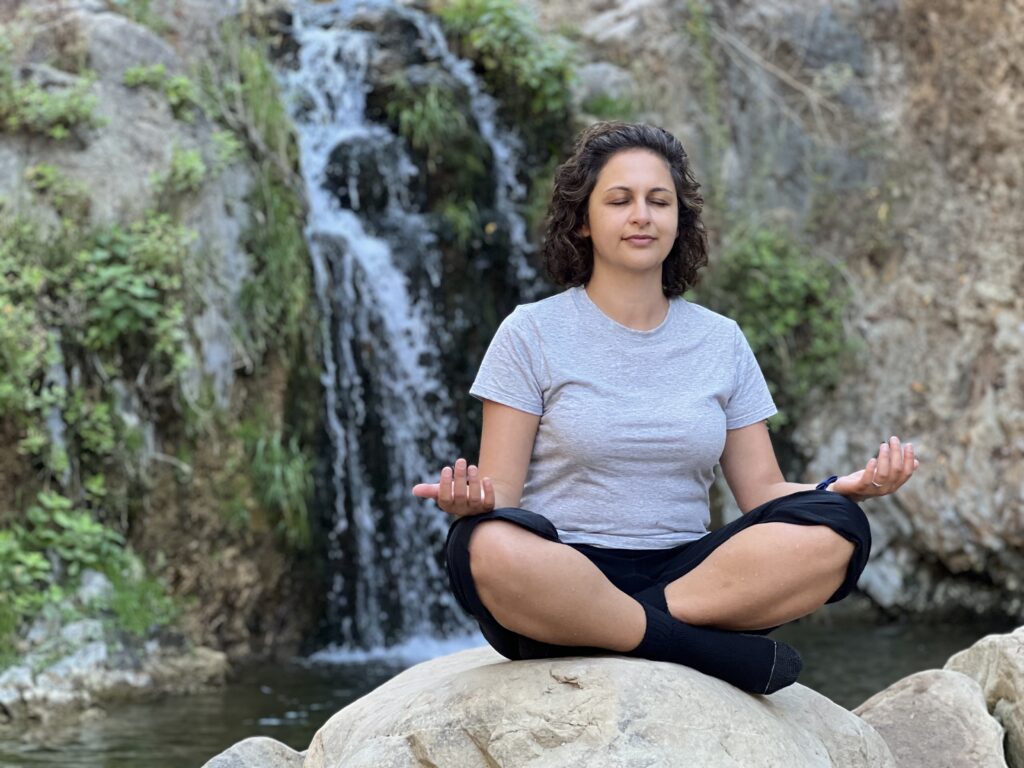
By focusing on small changes, you bypass this resistance and make it easier for your mind to adapt and accept the new habit.
Lastly, starting with small changes is that they are more sustainable in the long run.
It’s much easier to make a small adjustment a permanent part of your routine than it is to maintain a drastic, unsustainable change
By gradually increasing the intensity or duration of the habit over time, you create a habit that can be maintained for the long haul.
So, whether you’re trying to eat healthier, exercise more, or develop any other positive habit, remember to start small.
In doing so, you’ll increase your chances of discovering how to build new habits that stick to and ultimately achieve the lasting transformation you desire.
2. Identify your triggers
Triggers are the cues or stimuli that prompt you to engage in a specific behavior or habit.
By recognizing and understanding your triggers, you can better manage them and increase your chances of making new habits stick.
Triggers can be both internal and external.
Internal triggers are thoughts, emotions, or physical sensations that drive you to engage in a particular habit.
For example, feeling tired might trigger the habit of reaching for a cup of coffee in the afternoon.

On the other hand, external triggers are environmental cues that remind or prompt you to perform a certain habit.
It could be something as simple as seeing your workout clothes laid out, which acts as a trigger to exercise.
What has helped me identify my triggers is to become more aware of my environment and use mindfulness techniques to gauge how it’s impacting me.
For example, I know that if I go home immediately after work, then I won’t be motivated enough to leave the house to go practice yoga.
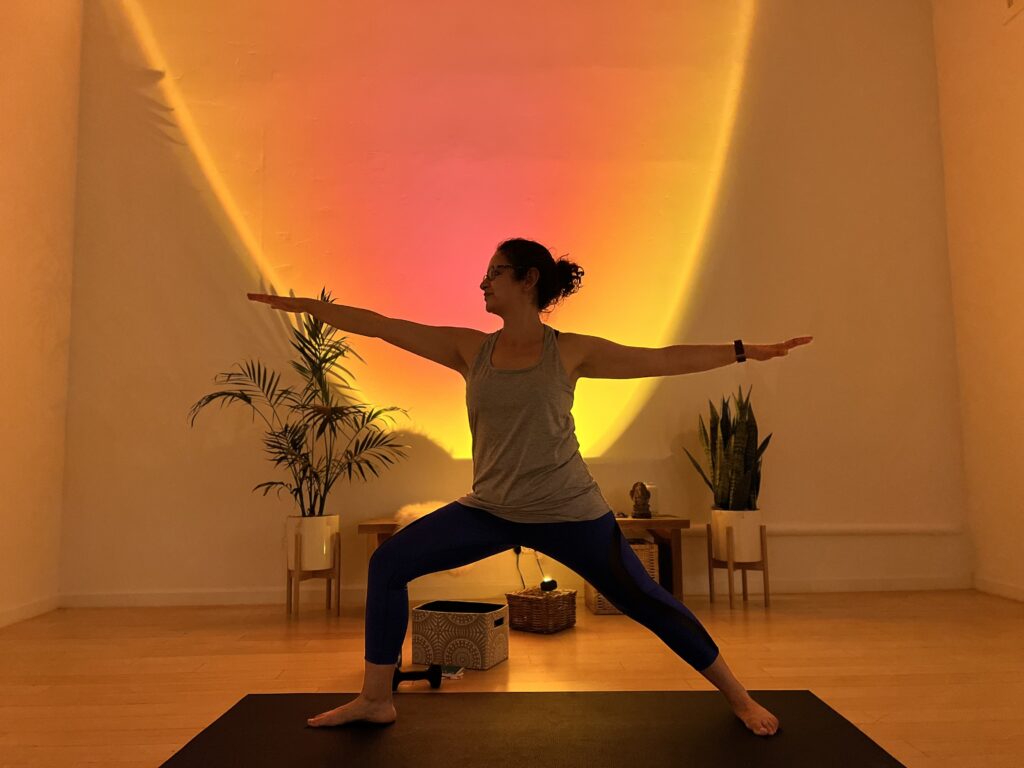
Therefore, I pack my workout clothing, change my clothes, and work and go directly to the yoga studio after I’m done with my shift at the hospital.
By understanding and managing your triggers, you can create an environment that supports your desired habits and minimizes the chances of falling back into old patterns.
3. Create a solid routine
Creating a solid routine is a key element in understanding how to build new habits stick.
When you establish a routine, you introduce structure and predictability into your daily life, making it easier to uphold your desired behaviors.
One of my habits that has helped me eat better and save money is to prepare all of my breakfasts and lunches for the work week.
I set aside an hour on Sundays for meal prep and this routine has radically improved my life.
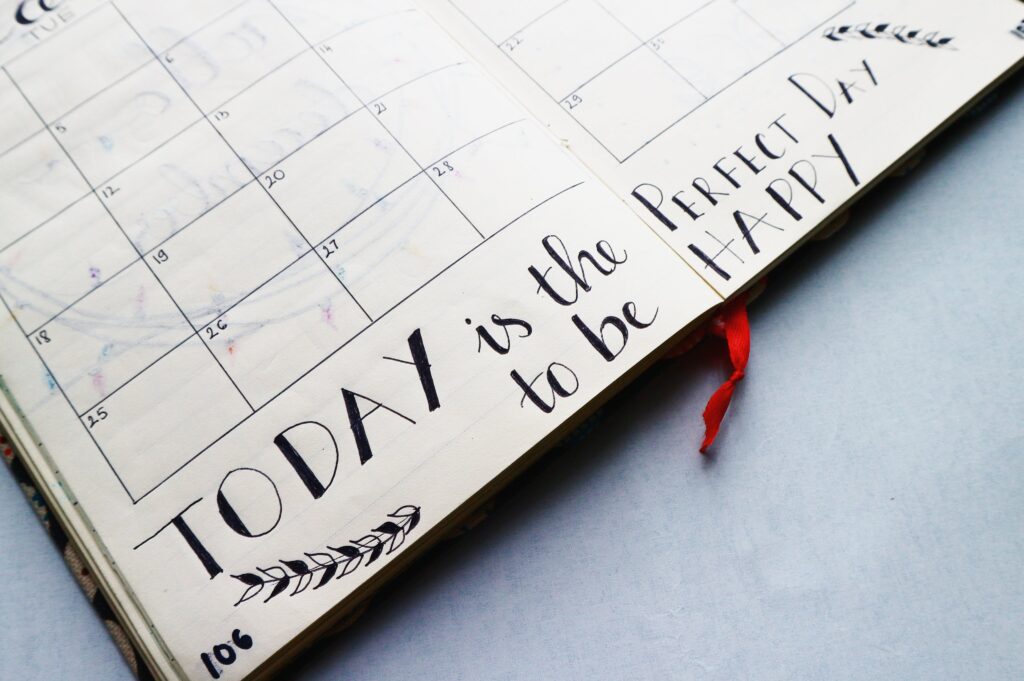
Think about your current routine and ask yourself what you would like to change about it so you can learn how to build habits that stick.
To create a healthy routine, consider your daily schedule and find a time slot where you can consistently dedicate the necessary time and energy.
Whether it’s waking up 30 minutes earlier to meditate or allocating a specific hour in the evening for reading, choosing a consistent time will help solidify the habit and make it easier to commit to.
In addition to selecting a specific time, designating a dedicated space for your new habit can enhance its stickiness.
Whether it’s a dedicated exercise area in your home or a quiet corner for journaling, having a designated space not only signals to your brain that it’s time for this particular habit but also creates a physical reminder to follow through.

When you associate a specific space with a desired behavior, you condition your mind to automatically engage in that activity when you’re in that space.
By implementing a solid routine, you provide yourself with the structure and consistency needed to make new habits stick.
Once your new habit becomes a part of your routine, it no longer requires conscious decision-making or willpower but instead becomes an automatic response.
4. Use positive reinforcement
If there’s anything that works exceptionally well for making changes to our habits it’s this.
Engage in positive reinforcement.
If you want to learn all about the psychology behind positive reinforcement, then check out this article.
In short, when you positively reinforce a new habit, you signal to your brain immediate gratification. In doing so, it strengthens the neural pathways associated with your new habit, making it more likely to stick in the long term.
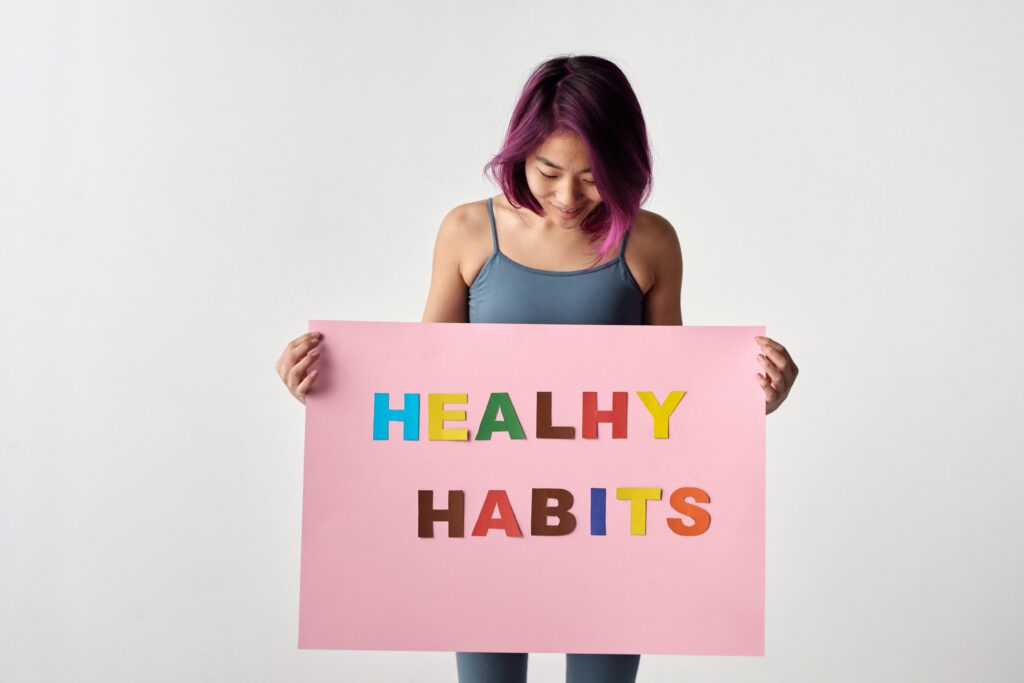
How do you do this?
Well, it depends on what habit you’re trying to change but a little trick I learned back when I went to the YMCA was to award myself a sticker on my calendar every time I exercised.
Yes, this might sound silly but I loved seeing the calendar fill up with stickers and I was thrilled when I got to reward myself immediately after a workout.
Positive reinforcement can take many forms depending on what motivates you.
It could be something as simple as giving yourself a small treat, like a piece of chocolate, or a few minutes of relaxation time, after completing your habit.
What has worked for me is creating a reward system through my workout calendar. After I complete a total of 20 workouts a month, I treat myself to a relaxing massage.
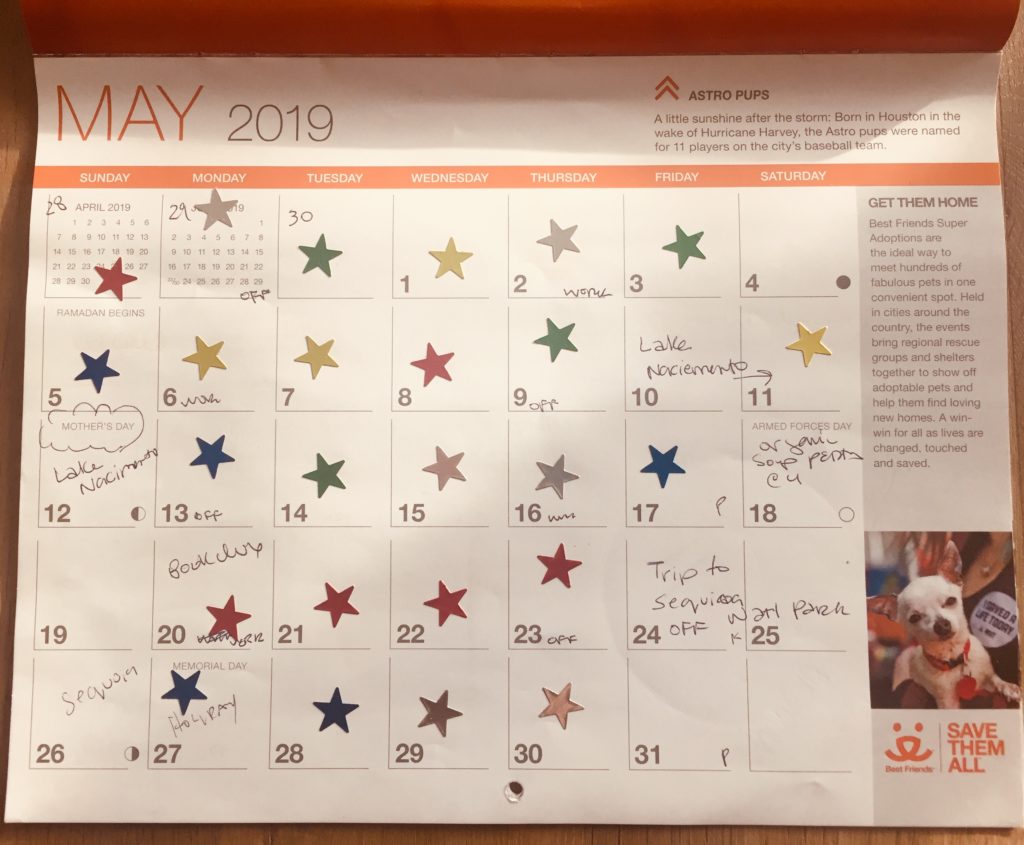
The key is to find rewards that are meaningful to you and that align with your goals.
Make sure the rewards are something you genuinely look forward to and that they provide a sense of pleasure and accomplishment.
This will create a positive association with your new habit and reinforce its importance in your daily life.
5. Enlist an accountability partner
Remember what I said about my habit of waking up earlier?
As someone who loves to sleep in on weekends, this habit hasn’t been that easy but what has helped me be more successful is enlisting an accountability partner.
My friend Maddy is a morning lark so if I make plans with her for a weekend morning activity, then I’m far more likely to stick to this habit because I look forward to seeing her.

The benefit of enlisting an accountability partner is a strategy that can greatly increase your chances of successfully sticking to your new habits.
Whether it’s a friend, family member, or colleague, having someone to share your progress and setbacks with can provide both support and motivation.
When you know that someone else is keeping an eye on your habits, you’re more likely to stay committed and avoid slipping back into old patterns.
Think carefully when choosing an accountability partner.
You want to select someone who will genuinely hold you accountable and provide constructive feedback. This person should be someone you trust and who shares your commitment to personal growth.
Perhaps, you can set up regular check-ins or meetings with your accountability partner to discuss your progress and challenges.

By openly sharing your successes and struggles, you’ll not only receive valuable guidance but also foster a sense of responsibility toward your habits.
By enlisting an accountability partner, you’re creating an external support system that reinforces your new habits. It brings an added layer of motivation and commitment to your journey of habit formation.
6. Track your progress
Earlier I had mentioned my positive reinforcement sticker reward system for my workouts.
What’s cool about this technique is that it helps me track my progress over the year.
When I look back at my calendar, I can see how far I’ve come and gives me a clear picture of where I still have room for improvement.
How do you track your progress?
Well, it depends on what type of habit you’re trying to build but you can do it through a journal, a habit-tracking app, or even a simple checklist.
Benefits of tracking your progress
- Provides a sense of accomplishment.
- As you check off completed tasks or see the tally of your consistent efforts, you’re able to celebrate your small victories along the way.
- This positive reinforcement can fuel your motivation and strengthen your resolve to stick with your new habits.
- Analyze patterns and identify potential obstacles.
- By reviewing your records, you can pinpoint specific triggers that may lead you astray or areas where you tend to stumble.
- Armed with this knowledge, you can proactively make adjustments and implement strategies to overcome challenges, ensuring that your habits stay firmly in place.
- Brings an element of accountability to your journey.
- A visual representation of your habits makes it harder to ignore any deviations or slip-ups.
- This serves as a gentle nudge to get back on track and stay committed to your goals.
- Your accountability partner can also play a role in holding you responsible, as they can review your progress with you and offer support and insights based on what they see.
When you have a clear record of your efforts, visualizing your success becomes more tangible and achievable.,
7. Visualize your success
There’s a lot of science behind visualizing your success.
For example, Olympic athletes use imagery as mental training. This helps them feel empowered and strong.
You don’t need to be training for the Olympics to get the same benefits though!
When you can vividly picture yourself succeeding in achieving your goals, it becomes easier to stay committed and motivated.
Something else you can try is to make yourself a vision board.
Having a visual representation of your success can also serve as a reminder during challenging times. When faced with obstacles or moments of self-doubt, you can turn to the mental image you’ve created and draw strength from it.
This positive reinforcement can help you overcome obstacles and stay focused on your journey.
Additionally, visualizing your success can spark creativity and innovation.
The more vividly you imagine achieving your goals, the more your mind will start generating ideas and strategies to make that vision a reality.
8. Focus on one habit at a time
Don’t try to make too many changes at once and instead focus on one habit at a time.
This is a fundamental principle when it comes to building new habits stick.

While it may be tempting to try and tackle multiple habits simultaneously, spreading yourself too thin can often lead to burnout and frustration.
By honing in on one habit at a time, you can give it your full attention and increase your chances of success.
When you focus on one habit at a time, you allow yourself to fully immerse yourself in the process of habit formation.

Take control. Feel better.
Start your Self-care Journey.
Take control.
Feel better.
Start your
Self-care Journey.
You can dedicate your energy and mental resources towards establishing that one habit, rather than spreading yourself too thin across multiple goals.
This focused approach allows you to develop a deeper understanding of the habit.
And the steps required to ingrain it into your routine.
Furthermore, by focusing on one habit at a time, you create momentum and build confidence as you witness your progress. Each small win reinforces your belief in your ability to create lasting change.
This positive reinforcement fuels your motivation and makes it easier to continue developing new habits in the future.
9. Make SMART goals
Want to be successful when you’re learning how to build habits that stick?
Then start making some SMART goals!
SMART is an acronym that stands for Specific, Measurable, Achievable, Relevant, and Time-bound.
By making SMART goals, you create a roadmap for success that enhances your ability to build and maintain new habits.
10. Eliminate distractions
To truly make new habits stick, it’s important to eliminate distractions that can derail your progress.
Distractions come in all shapes and sizes, from the buzzing of your smartphone to the lure of social media or the clutter on your desk.
These distractions can easily pull your attention away from your goals and hinder your ability to form new habits.
Want to know what my distractions are?
I’ve noticed that my biggest distraction is my phone and the notifications I receive. So what have I done?

I place my phone in a different room, and silence all of my notifications on my phone and laptop. I work in a quiet space so I can focus on blogging without interruptions.
The result of this change?
I feel calmer and more productive.
Remember, the key to learning how to build habits that stick is to create a clear path forward and remove any obstacles that may hinder your progress.
By eliminating distractions and creating a focused environment, you’ll be setting yourself up for success.
11. Practice self-compassion
One key strategy to integrate as you learn how to build habits that stick is to practice self-compassion.
We are our own worst critic and the internal messages and voice in our head can be scathing sometimes.
As you embark on this journey of creating new habits, it’s important to be kind to yourself if you stumble or encounter setbacks.
Unsure what self-compassion is, think of it as how you would speak to your best friend or loved one.
You don’t berate them over a slip-up, do you?
Instead, you probably acknowledge the effort they’re putting into making positive changes.
By practicing self-compassion, you create a safe space for yourself to learn and grow. Instead of feeling demotivated or defeated by setbacks, you can use them as learning opportunities.
Reflect on what went wrong and identify any triggers or challenges that contributed to the setback.
Use that knowledge to adjust your approach moving forward.
Additionally, self-compassion can help you maintain your motivation and momentum. When you acknowledge and celebrate the effort you’ve put into developing your new habit, you build a positive reinforcement loop.
This loop strengthens your commitment and reminds you of the progress you’ve made so far.
12. Learn from setbacks
On the other hand, be mindful of individuals who may inadvertently sabotage your progress. It’s not about cutting people out of your life.
Instead, recognize when certain relationships or environments may hinder your efforts.

This awareness will allow you to make conscious decisions about your interactions and the places you frequent, ensuring they align with your goals.
By taking the time to evaluate and optimize your environment, you are setting yourself up for success in making new habits stick.
Remember, your environment should act as a supportive framework that reinforces your desired behaviors and minimizes distractions.
13. Stay consistent
Consistency is the glue that holds everything together and turns small actions into powerful habits. It is the steady rhythm that propels you forward, even when faced with obstacles or distractions.
When it comes to building new habits, staying consistent means showing up every day and putting in the effort, regardless of how motivated or inspired you feel.
It means making a commitment to yourself and honoring that commitment day in and day out. Consistency is not about perfection or never faltering; it’s about showing up consistently, even on days when you may not feel like it.
Consistency provides stability and predictability, which are essential for habit formation.

When you consistently engage in a particular behavior, your brain starts to recognize it as a routine and becomes wired to expect and anticipate it.
This predictability makes it easier for your brain to automate the behavior, making it more effortless and natural over time.
Consistency is not always easy.
But it is the secret ingredient that separates those who succeed in making new habits stick from those who give up too soon.
With consistency, you establish a rhythm and momentum that propels you forward, making it easier to overcome setbacks and navigate through challenges.
By staying committed and showing up consistently, you create an environment that fosters habit formation and allows you to thrive.
Wrap-up
As the one-month yoga challenge was wrapping up, I realized a few remarkable strategies for unlocking the power of habit formation.
What I loved most was the accountability my teammates and I had for one another as well as celebrating our small and big wins.
In addition, the solid routine, tracking our progress through stickers on a calendar, and visualizing our success helped all of us feel motivated and driven.
I’m confident that you can learn how to build habits that stick.
Remember, change is challenging, but with determination and the right strategies, you can achieve remarkable transformations.
Now is the time to take action and unleash your true potential.
Are you ready to embrace these tips and start making the most of your life?
What experiences have you had learning how to build habits that stick? What strategies have worked well for you and what has been less helpful? Please share your stories and comments below.




14 Responses
This makes me want to pull out my yoga mat again today! I love changing small things through the months, it keeps things lively and not stale. You did a great job pointing out these things, thank you for sharing!
Hey Ashton I’m so happy that my article has inspired you to start your yoga practice again. It’s so much easier to focus on making a small change since it’s more sustainable. If you do end up practicing yoga again, maybe reward yourself with a sticker like I have been doing! The immediate gratification is so much fun!
All great reminders for those who struggle to make those changes
Thank you Eileen!
My phone is such a source of bad habits, too. I like the idea of having an accountability partner. Thank you!
I’ve noticed that I also struggle with spending far too much time on my phone. Thanks for sharing since it helps normalize what we go through.
Great post! Knowing and understanding my triggers has definitely been key in addition to consistency. Thanks for this.
Hi Tracy I appreciate the positive feedback. Consistency has been instrumental in my process of making new habits stick otherwise it’s easy for me to forget or go back to my old routines.
Great post and perfect timing as working on my 2024 goals now! Love all your strategies! I do need to watch for my triggers for sure! 🙂
Hey Laurie thank you for the great reminder that we’re all on the path of our 2024 goals so using these strategies are likely to help us.
This is a very inspiring article. I tend to often repeat the phrases, “Baby steps” or “One step at a time” as a way of making changes without feeling overwhelmed. If I change a habit with the “Baby step” method, it’s easier to stick to it. Thanks for sharing!
Hi there I totally agree with you that taking one step at a time and focusing on being present helps us when we’re trying to make changes in our life to incorporate new habits. I’m happy that the article inspired you and appreciate your comment.
This is so needed especially after New Year when so many make resolutions and then break them. Great post!
Hey Ann I totally agree with you that it’s helpful to have a reminder on how to make our new habits stick when we focus on our New Year’s Resolutions.